 W
WAdjectival tourism is the numerous niche or specialty travel forms of tourism; each with its own adjective.
 W
WAccessible tourism is the ongoing endeavor to ensure tourist destinations, products, and services are accessible to all people, regardless of their physical or intellectual limitations, disabilities or age. It encompasses publicly and privately owned and operated tourist locations. The goal of accessible tourism is to create inclusivity of all including those traveling with children, people with disabilities, as well as seniors. This allows those with access requirements to be able to function as an independent using products following the universal design principle, a variety of services, and different environments.
 W
WAgritourism or agrotourism involves any agriculturally based operation or activity that brings visitors to a farm or ranch.
 W
WArchaeotourism or Archaeological tourism is a form of cultural tourism, which aims to promote public interest in archaeology and the conservation of historical sites.
 W
WAtomic tourism or Nuclear tourism is a recent form of tourism in which visitors learn about the Atomic Age by traveling to significant sites in atomic history such as museums with atomic weapons, missile silos, vehicles that carried atomic weapons or sites where atomic weapons were detonated.
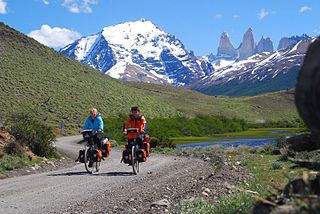 W
WBicycle touring is the taking of self-contained cycling trips for pleasure, adventure or autonomy rather than sport, commuting or exercise. Touring can range from single-day trips, to multi-day trips, to years. Tours may be planned by the participant or organised by a holiday business, a club, or a charity as a fund-raising venture.
 W
WBirth tourism is the practice of traveling to another country for the purpose of giving birth in that country. The main reason for birth tourism is to obtain citizenship for the child in a country with birthright citizenship. Such a child is sometimes called an "anchor baby" if their citizenship is intended to help their parents obtain permanent residency in the country. Other reasons for birth tourism include access to public schooling, healthcare, sponsorship for the parents in the future, or even circumvention of China's two-child policy. Popular destinations include the United States and Canada. Another target for birth tourism is Hong Kong, where some mainland Chinese citizens travel to give birth to gain right of abode for their children.
 W
WIn British slang, a booze cruise is a brief trip from Britain to France or Belgium with the intent of taking advantage of lower prices, and buying personal supplies of (especially) alcohol or tobacco in bulk quantities. This is a legally acceptable process and should not be confused with smuggling.
 W
WCamping is an outdoor activity involving overnight stays away from home with or without a shelter, such as a tent or a recreational vehicle. Typically participants leave developed areas to spend time outdoors in more natural ones in pursuit of activities providing them enjoyment. The night spent outdoors distinguishes camping from day-tripping, picnicking, and other similarly short-term recreational activities.
 W
WCulinary tourism or food tourism or gastronomy tourism is the exploration of food as the purpose of tourism. It is now considered a vital component of the tourism experience. Dining out is common among tourists and "food is believed to rank alongside climate, accommodation, and scenery" in importance to tourists.
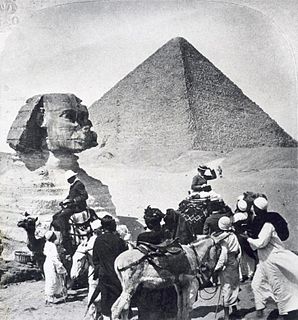 W
WCultural tourism is a type of tourism activity in which the visitor’s essential motivation is to learn, discover, experience and consume the tangible and intangible cultural attractions/products in a tourism destination. These attractions/products relate to a set of distinctive material, intellectual, spiritual and emotional features of a society that encompasses arts and architecture, historical and cultural heritage, culinary heritage, literature, music, creative industries and the living cultures with their lifestyles, value systems, beliefs and traditions.
 W
WDark tourism has been defined as tourism involving travel to places historically associated with death and tragedy. More recently, it was suggested that the concept should also include reasons tourists visit that site, since the site's attributes alone may not make a visitor a "dark tourist". The main attraction to dark locations is their historical value rather than their associations with death and suffering. Holocaust tourism contains aspects of both dark tourism and heritage tourism.
 W
WDisaster tourism has been defined as the practice of visiting locations at which an environmental disaster, either natural or man-made, has occurred. Although a variety of disasters are the subject of subsequent disaster tourism, the most common disaster tourist sites are areas surrounding volcanic eruptions.
 W
WEcotourism is a form of tourism involving responsible travel to natural areas, conserving the environment, and improving the well-being of the local people. Its purpose may be to educate the traveler, to provide funds for ecological conservation, to directly benefit the economic development and political empowerment of local communities, or to foster respect for different cultures and for human rights. Since the 1980s, ecotourism has been considered a critical endeavor by environmentalists, so that future generations may experience destinations relatively untouched by human intervention. Several university programs use this description as the working definition of ecotourism.
 W
WEnotourism, oenotourism, wine tourism, or vinitourism refers to tourism whose purpose is or includes the tasting, consumption or purchase of wine, often at or near the source. Where other types of tourism are often passive in nature, enotourism can consist of visits to wineries, tasting wines, vineyard walks, or even taking an active part in the harvest.
 W
WEscorted tours are a form of tourism in which travelers are escorted in a group to various destinations, versus a self-guided tour where the tourist is on their own.
 W
WAn excursion is a trip by a group of people, usually made for leisure, education, or physical purposes. It is often an adjunct to a longer journey or visit a place, sometimes for other purposes.
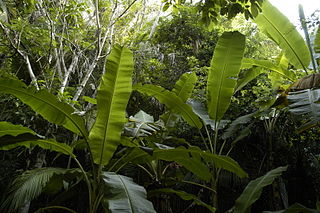 W
WExtreme tourism is a niche in the tourism industry involving travel to dangerous places or participation in dangerous events. Extreme tourism overlaps with extreme sport. The two share the main attraction, "adrenaline rush" caused by an element of risk, and differing mostly in the degree of engagement and professionalism.
 W
WGarden tourism is a type of niche tourism involving visits or travel to botanical gardens and places which are significant in the history of gardening. Garden tourists often travel individually in countries with which they are familiar but often prefer to join organized garden tours in countries where they might experience difficulties with language, travel or finding accommodation in the vicinity of the garden. In the year 2000 the Alhambra and the Taj Mahal both received over two million visitors. This poses problems for the landscape manager.
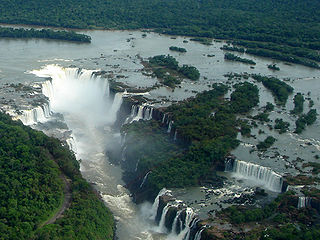 W
WGeotourism is tourism associated with geological attractions and destinations. Geotourism deals with the abiotic natural and built environments.
 W
WGlamping is a portmanteau of "glamorous" and "camping", and describes a style of camping with amenities and, in some cases, resort-style services not usually associated with "traditional" camping. Glamping has become particularly popular with 21st century tourists seeking the luxuries of hotel accommodation alongside "the escapism and adventure recreation of camping".
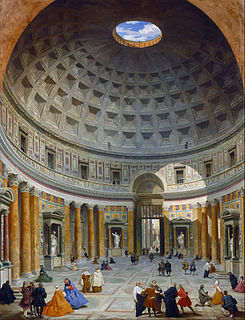 W
WThe Grand Tour was the 17th- and 18th-century custom of a traditional trip through Europe undertaken by upper-class young European men of sufficient means and rank when they had come of age.
 W
WCultural heritage tourism is a branch of tourism oriented towards the cultural heritage of the location where tourism is occurring.
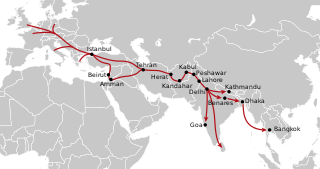 W
WThe hippie trail is the name given to the overland journey taken by members of the hippie subculture and others from the mid-1950s to the late 1970s between Europe and South Asia, mainly through Iran, Afghanistan, Pakistan, India, and Nepal. The hippie trail was a form of alternative tourism, and one of the key elements was travelling as cheaply as possible, mainly to extend the length of time away from home. The term "hippie" became current in the mid-to-late 1960s; "beatnik" was the previous term from the later 1950s.
 W
WHolocaust tourism is round-trip travel to destinations connected with the extermination of Jews during the Holocaust in World War II, including visits to sites of Jewish martyrology such as former Nazi death camps and concentration camps turned into state museums. It belongs to a category of the so-called 'roots tourism' usually across parts of Central Europe, or, more generally, the Western-style dark tourism to sites of death and disaster.
 W
WIndustrial tourism is tourism in which the desired destination includes industrial sites peculiar to a particular location. The concept is not new, as it includes wine tours in France, visits to cheesemakers in the Netherlands, Jack Daniel's distillery tours in the United States for example, but has taken on renewed interest in recent times, with both industrial heritage sites and modern industry attracting tourism.
 W
WInternational tourism refers to tourism that crosses national borders. Globalisation has made tourism a popular global leisure activity. The World Tourism Organization defines tourists as people "traveling to and staying in places outside their usual environment for not more than one consecutive year for leisure, business and other purposes". The World Health Organization (WHO) estimates that up to 500,000 people are in flight at any one time.
 W
WLGBT tourism is a form of tourism marketed to gay, lesbian, bisexual, and transgender (LGBT) people. People might be open about their sexual orientation and gender identity at times, but less so in areas known for violence against LGBT people.
 W
WLiterary tourism is a type of cultural tourism that deals with places and events from fictional texts as well as the lives of their authors. This could include following the route taken by a fictional character, visiting particular place associated with a novel or a novelist, such as their home, or visiting a poet's grave. Some scholars regard literary tourism as a contemporary type of secular pilgrimage. There are also long-distance walking routes associated with writers, such as the Thomas Hardy Way.
 W
WMotorcycle touring is a format of tourism that involves a motorcycle. It has been a subject of note since at least 1915.
 W
WNautical tourism, also called water tourism, is tourism that combines sailing and boating with vacation and holiday activities. It can be travelling from port to port in a cruise ship, or joining boat-centered events such as regattas or landing a small boat for lunch or other day recreation at specially prepared day boat-landings. It is a form of tourism that is generally more popular in the summertime.
 W
WPop-culture tourism is the act of traveling to locations featured in popular literature, film, music, or any other form of media. Also referred to as a "Location Vacation".
 W
WRecreational travel involves travel for pleasure and recreation.
 W
WReligious tourism, spiritual tourism, sacred tourism, or faith tourism, is a type of tourism with two main subtypes: pilgrimage, meaning travel for religious or spiritual purposes, and the viewing of religious monuments and artefacts, a branch of sightseeing.
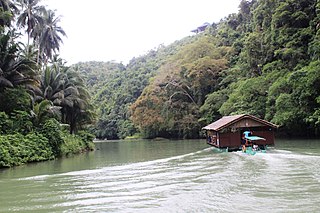 W
WA river cruise is a voyage along inland waterways, often stopping at multiple ports along the way. Since cities and towns often grew up around rivers, river cruise ships frequently dock in the center of cities and towns.
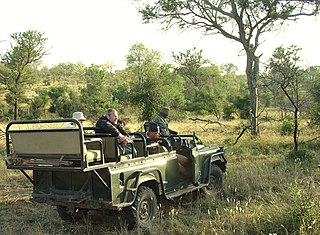 W
WA safari is an overland journey to hunt or observe wild animals, especially in east or southern Africa. The so-called Big Five game animals of Africa – lion, leopard, rhinoceros, elephant, and Cape buffalo – particularly form an important part of the safari market, both for wildlife viewing and big-game hunting.
 W
WA scenic route, tourist road, tourist route, tourist drive, holiday route, theme route, or scenic byway is a specially designated road or waterway that travels through an area of natural or cultural beauty. The designation is usually determined by a governmental body, such as a Department of Transportation or a Ministry of Transport.
 W
WA self-guided tour is a self-governing tour where one navigates a route oneself as opposed to an escorted tour where a tour guide directs the route, times, information, and places toured. Many tourist attractions provide suggestions, maps, instructions, directions, and items to see or do during self-guided tours.
 W
WShark tourism is a way for tourists to see sharks in the ocean rather than in an aquarium. It is a form of eco-tourism intended to show that local shark species are more valuable alive than dead. Instead of opting for a one time economic benefit of harvesting sharks for their body parts, communities are enabled to assist tourists who want to see live sharks. People can get close to the sharks by free- or scuba diving or entering the water in a protective cage.
 W
WShip watching is a form of outdoor activity and tourism that is carried out worldwide by observing the passage of various ships in the waterways where there is a lot of ship traffic.
 W
WSlow tourism is an alternative tourism choice in contrast to mass tourism. Slow tourism is a part of the sustainable tourism family, different from mainstream tourism and emphasizing the tourist’s greater personal awareness. It is characterized by reducing mobility and by taking time to explore local history and culture, while supporting the environment. The concept emerged from the Italian Slow Food movement and the Cittaslow movement.
 W
WSlum tourism, poverty tourism, or ghetto tourism is a type of city tourism that involves visiting impoverished areas. Originally focused on the slums and ghettos of London and Manhattan in the 19th century, slum tourism is now prominent in South Africa, India, Brazil, Kenya, Philippines, Russia and the United States.
 W
WSpace tourism is human space travel for recreational purposes. There are several different types of space tourism, including orbital, suborbital and lunar space tourism. To date, orbital space tourism has been performed only by Roscosmos. Work also continues towards developing suborbital space tourism vehicles. This is being done by aerospace companies like Blue Origin and Virgin Galactic. In addition, SpaceX announced in 2018 that they are planning on sending space tourists, including Yusaku Maezawa, on a free-return trajectory around the Moon on the Starship.
 W
WSpring break is a vacation period including Easter holidays in early spring at universities and schools, which started during the 1930s in the US and is now observed in many other countries as well. Spring break is frequently associated with extensive gatherings and riotous partying in warm climate locations such as Daytona Beach, Florida, Panama City Beach, Florida, Gulf Shores, Alabama and Cancún, Mexico, attended regardless of participants' educational standings.
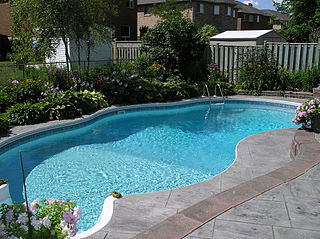 W
WA staycation, or holistay, is a period in which an individual or family stays home and participates in leisure activities within day trip distance of their home and does not require overnight accommodation. In British English the term has increasingly come to refer to domestic tourism: taking a holiday in one's own country as opposed to travelling abroad.
 W
WSustainable tourism is the tourism that takes full account of its current and future economic, social and environmental impacts, addressing the needs of visitors, the industry, the environment and host communities. Tourism can involve primary transportation to the general location, local transportation, accommodations, entertainment, recreation, nourishment and shopping. It can be related to travel for leisure, business and visiting friends and relatives. There is now broad consensus that tourism development should be sustainable and that all forms of tourism has the potential to be sustainable if planned, developed and managed properly.
 W
WTolkien tourism is a phenomenon of fans of The Lord of the Rings fictional universe travelling to sites of film- and book-related significance. It is especially notable in New Zealand, site of the movie trilogy by Peter Jackson, where it is credited as having raised the annual tourism numbers.
 W
WTourism geography is the study of travel and tourism, as an industry and as a social and cultural activity. Tourism geography covers a wide range of interests including the environmental impact of tourism, the geographies of tourism and leisure economies, answering tourism industry and management concerns and the sociology of tourism and locations of tourism.
 W
WUrban tourism or also called City tourism is a form of tourism that takes place in the large human agglomerations, usually in the main cities or urban areas of each country.
 W
WA virtual tour is a simulation of an existing location, usually composed of a sequence of videos or still images. It may also use other multimedia elements such as sound effects, music, narration, and text. It is distinguished from the use of live television to affect tele-tourism.
 W
WA walking tour is a tour of a historical or cultural site undertaken on foot, frequently in an urban setting. Short tours can last under an hour, while longer ones can take in multiple sites and last a full day or more. A walk can be led by a tour guide, as an escort.
 W
WNautical tourism, also called water tourism, is tourism that combines sailing and boating with vacation and holiday activities. It can be travelling from port to port in a cruise ship, or joining boat-centered events such as regattas or landing a small boat for lunch or other day recreation at specially prepared day boat-landings. It is a form of tourism that is generally more popular in the summertime.
 W
WWellness tourism is travel for the purpose of promoting health and well-being through physical, psychological, or spiritual activities. While wellness tourism is often correlated with medical tourism because health interests motivate the traveler, wellness tourists are proactive in seeking to improve or maintain health and quality of life, often focusing on prevention, while medical tourists generally travel reactively to receive treatment for a diagnosed disease or condition.
 W
WWhale watching is the practice of observing whales and dolphins (cetaceans) in their natural habitat. Whale watching is mostly a recreational activity, but it can also serve scientific and/or educational purposes. A study prepared for International Fund for Animal Welfare in 2009 estimated that 13 million people went whale watching globally in 2008. Whale watching generates $2.1 billion per annum in tourism revenue worldwide, employing around 13,000 workers. The size and rapid growth of the industry has led to complex and continuing debates with the whaling industry about the best use of whales as a natural resource.
 W
WWildlife tourism is an element of many nations' travel industry centered around observation and interaction with local animal and plant life in their natural habitats. While it can include eco- and animal-friendly tourism, safari hunting and similar high-intervention activities also fall under the umbrella of wildlife tourism. Wildlife tourism, in its simplest sense, is interacting with wild animals in their natural habitat, either by actively or passively. Wildlife tourism is an important part of the tourism industries in many countries including many African and South American countries, Australia, India, Canada, Indonesia, Bangladesh, Malaysia, Sri Lanka and Maldives among many. It has experienced a dramatic and rapid growth in recent years worldwide and many elements are closely aligned to eco-tourism and sustainable tourism.
 W
WYoga tourism is travel with the specific purpose of experiencing some form of yoga, whether spiritual or postural. The former is a type of spiritual tourism; the latter is related both to spiritual and to wellness tourism. Yoga tourists often visit ashrams in India to study yoga or to be trained and certified as yoga teachers. Major centres for yoga tourism include Rishikesh and Mysore.